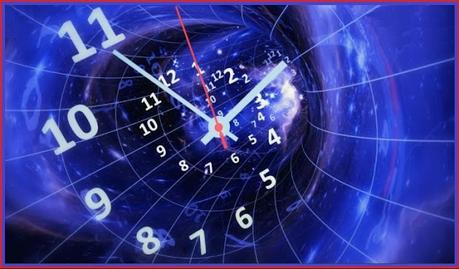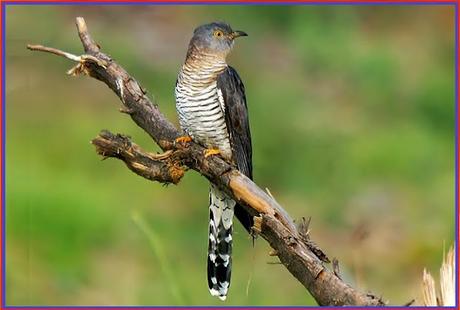The detailed explanation: Life on Earth evolved on a rotating sphere orbiting a star, and organisms – from the earliest cyanobacteria and plants to mankind – have to cope with the daily variation of light and temperature from day to night. At the simplest level, this is an anticipation of dawn to allow an organism to protect its DNA from damaging UV light. In eukaryotic organisms, this daily cycle is reflected in the nucleus of almost every cell. An oscillating pattern of protein production and disintegration maintains a roughly 24 hour pulse – the ticking of a molecular clock. In human beings and other diurnal species, as day approaches proteins are created to warm us and lower the threshold for arousal; to wake us up and to get us ready for food and activity. The proteins produced at night provide a cooler, although still physiologically active, sleep. And then the cycle begins again.In 1971 a professor at the California Institute of Technology discovered that a single gene (and a specific piece of DNA) was responsible for managing the cycle, the first time that behavior (in addition to physical characteristics) had been linked to a gene. As DNA sequencing capabilities advanced, this gene - called PER (for period) - and the PER protein it specified, could be credited as the clock mechanism of living organisms, existing in almost all cells. What is more, the beat of these myriad cell clocks is kept in alignment by controlled pulses from a group of neurons in a tiny region of the brain called the SCN situated close to the optic nerve fibres.
Over several hours, starting in the early hours of the morning, the PER protein is synthesised and begins to accumulate in cytoplasm. As its concentration increases, it starts to be transported into the nucleus, peaking in the middle of the night. In the nucleus it binds and deactivates its own transcriptional factors, stopping production of its own mRNA, and turning off further production. Over the next few hours, the PER protein in the nucleus is degraded and removed, until the mRNA starts to be exported again to ramp up PER production for another day.This complex chemical phenomenon is not just light-related but heat sensitive too. (There is no point in a flower opening at a set time if the temperature is wrong.) So there is a group of phosphates which effect simple changes in electrostatic charge in the mechanism.
And there is more. Over the last forty-five years, research on circadian systems in biology has opened a window on the mechanisms of life and on our deep connection to the rhythms of our planet home. The 2017 Nobel prize recognized early insights into the pattern of protein production and destruction that provides one of the key self-regulating feedback loops. Modern tools in molecular biology have identified more of the molecules involved in the complex system of checks and balances that measure out the hours of the day and the seasons of the year. New research is starting to reveal the chemistry – the reactions, molecular dynamics, competitive binding and diffusion – that determines the intricate behavior of biorhythms.

The importance of 'being at one with nature' is so much more than a cosy motherhood statement. Short-term changes (like long-distance jet travel) can result in temporary aberrations in the mechanism - we know it as jet lag - which we soon recover from. Longer term changes (like working night-shifts or in a permanently darkened environment) can result in more severe behavioural issues. In addition, links are emerging between the circadian system and disease in human beings. People in whom the circadian clock is running incorrectly (too slow, too fast) or is running correctly but is set to the wrong time may be prone to both physical and mental illnesses from cardiovascular disease and SAD (seasonal affective disorder) to bi-polar syndrome and even schizophrenia. Research in this area is gathering momentum as the index of mental illness in 21st century society appears to be rising steadily. But I don't want to get too far into the negative implications of malfunctioning circadian clocks. Greet every sunrise. đŸŒž
However, if you are feeling a little out of sorts, maybe in the grip of an emotion or feeling or tendency you can't quite give a name to, here's a checklist that might help (stolen from a FB post):Adronitis: frustration with how long it takes to get to know someoneAltschmerz: weariness with the same old issues that have been troubling you for yearsEllipsism: a sadness that you'll never be able to know how history will turn outJouska: a hypothetical conversation that you compulsively play out in your headLiberosis: the desire to care less about thingsMauerbauertraurigkelt: the inexplicable urge to push people away, even close friendsMonachopsis: the subtle but persistent feeling of being out of placeNodus Tollens: the realization that the plot of your life doesn't make sense to you anymoreOnism: the frustration of being stuck in just one body, that inhabits only one place at a timeRubatosis: the unsettling awareness of your own heartbeatVellichor: the strange wistfulness of used bookshops
I hope some of that helps! I leave you with this latest poetry from the imaginarium. It may be on theme, but then again, perhaps not.

The starting point, obviously enough, was clocks and natural cycles; and then somehow I found myself thinking about the common cuckoo, unnatural behavior and the strangest (and most shocking) thing anyone has ever said to me...
Cuckoo
In May she arrives on time,bubbling harbinger of change,announcing unmistakeablythat Spring is here again,meadows will soon bloom,beech woods surely turn greenand little eggs get savaged.
Bittersweet, this clockingof her call, unpleasing to the married ear according to some ancient lore.
Through June she stays,lustful eye unsheathing,hawkish mimicry deceivingto her driven end. Whose bedis this? Whose affection is she weaving?Whose nest is she bereaving?
By July she's changed her tune,is starting to get flighty.Others can fend for and raiseher interloping brood.
On hot summer nightsshe sings her song of freedomrejoicing that her offspringhave usurped and thrived.She's only sticking rounduntil the fun's worn off.By August she's gone.
Thanks for reading. Remember those sunrises, S ;-) Email ThisBlogThis!Share to TwitterShare to Facebook
